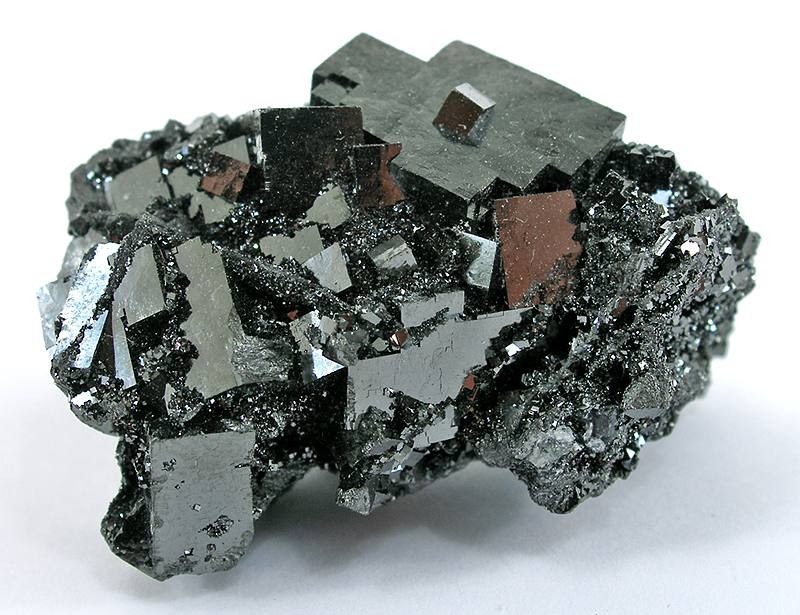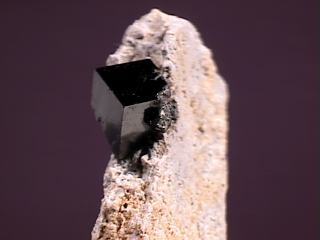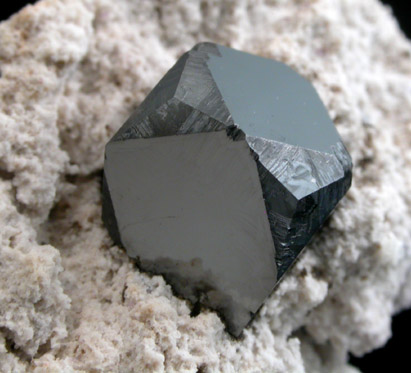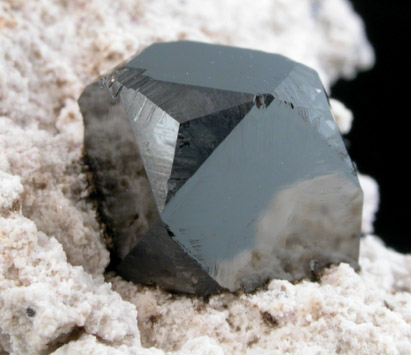Bixbyite
- Manganese ( III) oxide
- Partridgeit
- Sitaparit
- Mn3 2 O3
Bixbyite, not to be confused with the outdated trade name Bixbite for the Red beryl is a rare mineral used in the mineral class of " oxides and hydroxides ". It crystallizes in the cubic crystal system with the idealized composition Mn3 2 O3, is therefore a chemical point of manganese (III ) oxide. Since naturally formed Bixbyite is however always with a small proportion to find iron, which replaces the manganese, the formula is often specified with (Mn, Fe) 2O3.
Bixbyite is opaque and usually develops black, cubic crystals and combinations and crystal twins to about six centimeters in size, their surfaces have a metallic luster.
Etymology and history
Was named the mineral after the American prospector, mineral dealer, author and explorer of the Thomas Mountains Maynard Bixby (1853-1935), who collected the first specimens and delivered.
Was first found in 1897 in Bixbyite " Maynard's claim" ( pismire Knolls ) in Juab County ( Utah) and described by Samuel Lewis Penfield ( 1856-1906 ) and HW Foote.
Classification
In the now outdated but still in use 8th edition of the mineral classification by Strunz the Bixbyite belonged to the department of " oxides with the molar ratio of metal: Oxygen = 2: 3 ( M2O3 and related compounds ) ," where he along with Avicennit the " Bixbyite - series " with the system number. IV/C.03 formed.
The 9th edition valid since 2001 and of the International Mineralogical Association (IMA ) used the Strunz'schen Mineral classification assigns the Bixbyite in the Advanced section of the " oxide with the molar ratio of metal: oxygen = 2: 3, 3: 5 and comparable ". This is also precisely divided according to the relative size of the cations involved, so that the mineral is found according to its composition in the subsection "With medium-sized cations " where there also along with Avicennit the " Bixbyitgruppe " with the system no. 4.CB.10 forms.
The classification of minerals according to Dana assigns the Bixbyite in the class of " oxides and hydroxides " and there in the department of " oxides ". Here it is to find "simple oxides with a cation charge of 3 ( A2O3 ) " together with maghemite in the unnamed group 04:03:07 within the subdivision.
Education and Locations
Bixbyite is either formed by hydrothermal processes in rhyolite chambers or in metamorphic manganese ore deposits. Accompanying minerals include beryl, Braunite, hematite, pseudobrookite, quartz, sanidine, Spessartine and topaz.
Worldwide, Bixbyite so far (as of 2010) are detected in about 80 localities. In Germany the mineral at Fahlenbach and in the " Ferdinand Mine" at Unterkirnach (Baden- Württemberg ), and at several locations in the Eifel region ( Rhineland -Palatinate ) was found. In Austria Bixbyite previously occurred ( Goldberg Group, Salzburg ) in the Goldzechscharte on Hocharn (Carinthia ) and at Goldzechkopf.
More Locations are Afghanistan, Argentina, Australia, Bolivia, China, France, India, Italy, Japan, Mexico, Namibia, Sweden, Zimbabwe, Spain, South Africa, Tanzania, Turkey, the United Kingdom ( UK ) and the United States of America (USA).
Crystal structure
Bixbyite cubic crystallized in the space group Ia3 ( Raumgruppen-Nr. 206 ) with the lattice parameters a = 9.41 Å and 16 formula units per unit cell.










